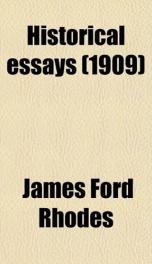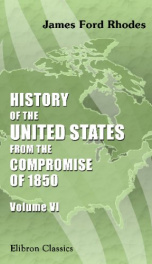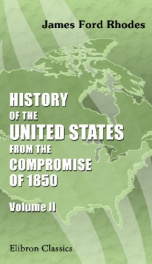Historical Essays

Purchase of this book includes free trial access to www.million-books.com where you can read more than a million books for free. This is an OCR edition with typos. Excerpt from book: NEWSPAPERS AS HISTORICAL SOURCES A paper read before the American Historical Association in Washington on December 29, 1908; printed in the Atlantic Monthly, May, 1909. NEWSPAPERS AS HISTORICAL SOURCES The impulse of an American writer in justifying the use of newspapers as historical materials is to adopt an apologetic tone. It is somewhat curious that such should be the case, for newspapers satisfy so many canons of historical evidence. They are contemporary, and, being written without knowledge of the end, cannot bolster any cause without making a plain showing of their intent. Their object is the relation of daily events; and if their relation is colored by honest or dishonest partisanship, this is easily discernible by the critic from the internal evidence and from an easily acquired knowledge of a few external facts. As the journals themselves say, their aim is to print the news; and much of the news is present politics. Moreover, the newspaper itself, its news and editorial columns, its advertisements, is a graphic picture of society. When Aulard, in his illuminating criticism of Taine, writes that the journals are a very important source of the history of the French Revolution, provided they are revised and checked by one another, the statement seems in accordance with the canons of historical writing; and when he blames Taine for using two journals only and neglecting ten others which he names, the impression on the mind is the same as if Taine were charged with the neglect of evidence of another class. One would hardly attempt to justify Taine by declaring that all journals are inaccurate, partisan, and dishonest, and that the omission was a merit, not a defect. Leaving out of account the greater size and diffuseness of the modern journal, the dictum of Aular...
Info about the book
Author:
Series:
Unknown
ASIN:
B008IJNS0O
Rating:
3/5 (4)Your rating:
0/5
Languge:
English
Users who have this book
Users who want this book
What readers are saying
What do you think? Write your own comment on this book!
write a commentGenre
if you like Historical Essays try:
Do you want to read a book that interests you? It’s EASY!
Create an account and send a request for reading to other users on the Webpage of the book!




